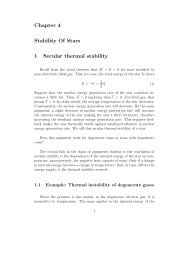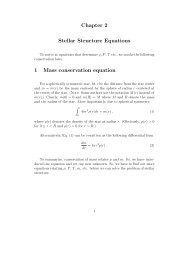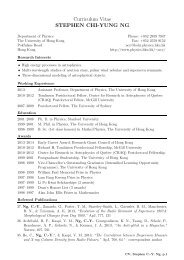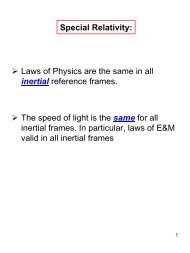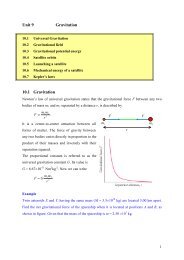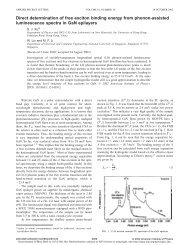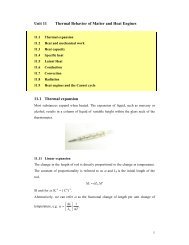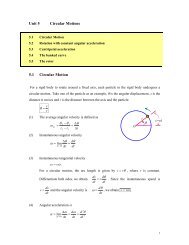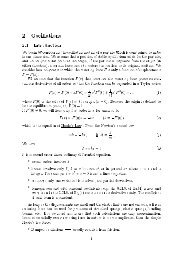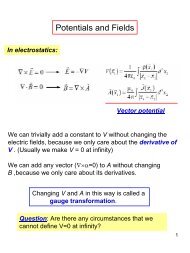here - Department of Physics, HKU
here - Department of Physics, HKU
here - Department of Physics, HKU
You also want an ePaper? Increase the reach of your titles
YUMPU automatically turns print PDFs into web optimized ePapers that Google loves.
CHAPTER 3. LORENTZ TRANSFORMATIONS 17<br />
Third, the origin <strong>of</strong> the stationary system must have x = 0 and x ′ = −vt ′ .<br />
By Eq. (3.3) and Eq. (3.4), for all t,<br />
To summarize up to now, we have<br />
{<br />
x<br />
′<br />
= −vft<br />
t ′ = kt<br />
−vft = −vkt<br />
k = f . (3.6)<br />
x ′ = f(x − vt) (3.7)<br />
t ′ = hx + ft . (3.8)<br />
Fourth, let consider a photon with trajectory x = ct. Since it passes<br />
through the origin <strong>of</strong> the stationary coordinate system, it also passes through<br />
the origin <strong>of</strong> the moving coordinate system, x ′ = t ′ = 0. By the second basic<br />
premise <strong>of</strong> special relativity, it must also have velocity c. Hence, x ′ = ct ′ ,<br />
and<br />
f(x − vt) = x ′<br />
= ct ′ = c(hx + ft)<br />
f(ct − vt) = c(hct + ft)<br />
fc − fv = c 2 h + cf<br />
h = −fv/c 2 . (3.9)<br />
Finally, consider the event that the photon strikes the lower mirror <strong>of</strong> the<br />
light<br />
√<br />
clock in Section 2.4. It has the coordinates (x, t) = (vt, t) and (x ′ , t ′ ) =<br />
(0, t 1 − v 2 /c 2 ). (Note that we used different notation in Section 2.4.) We<br />
have<br />
t ′ = f(t − vx/c 2 )<br />
√<br />
t 1 − v 2 /c 2 = f(1 − v 2 /c 2 ) t<br />
1<br />
f = √1 − v 2 /c . (3.10)<br />
2<br />
To summarize, we have<br />
x ′ =<br />
x − vt<br />
√1 − v 2 /c 2 (3.11)<br />
y ′ = y (3.12)<br />
z ′ = z (3.13)<br />
t ′ = t − vx/c2 √1 − v 2 /c 2 . (3.14)



